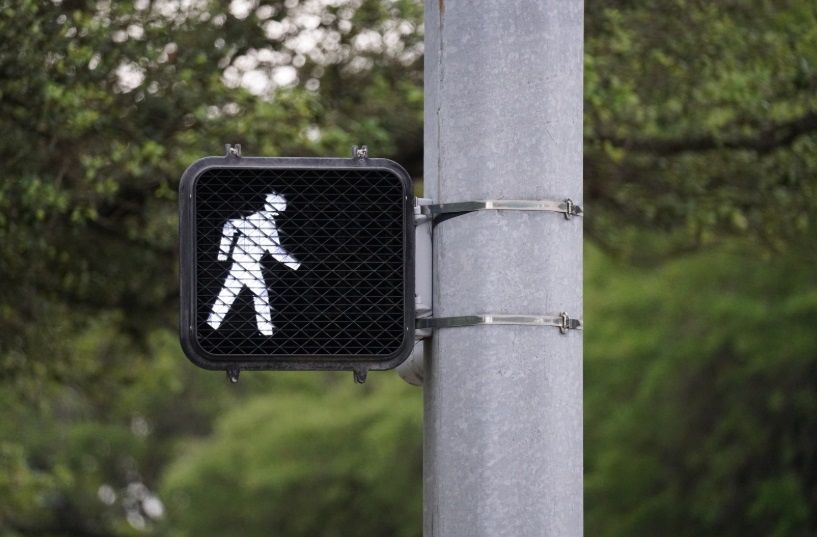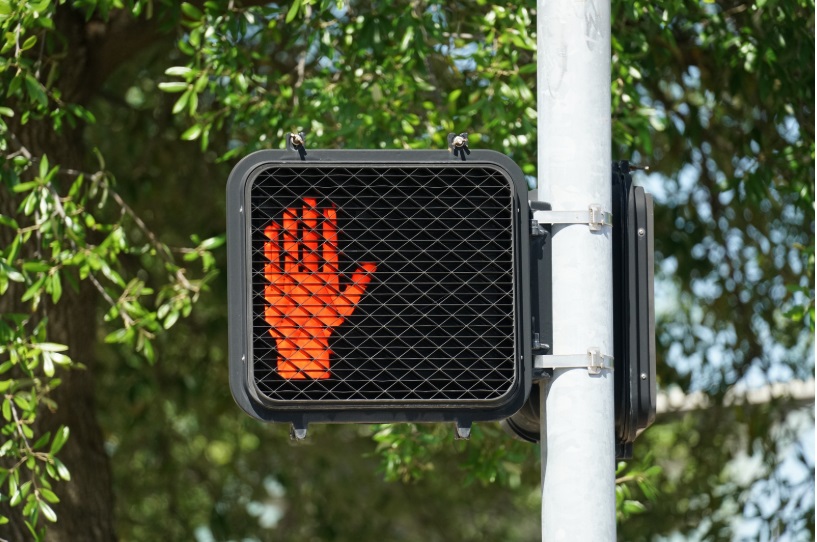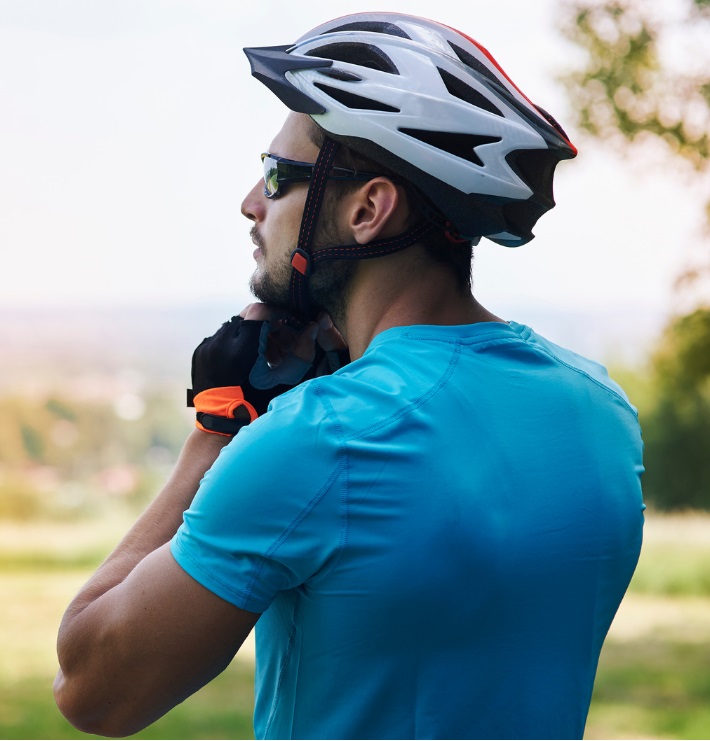Active Transportation Safety
What is active transportation?
Active transportation refers to all forms of human-powered transportation that move people and goods to and from destinations. Examples include walking, cycling, skateboarding and scootering. The use of e-bikes and e-scooters are other examples of active transportation.
If you are an active transportation user, below are tips and information on how to stay safe.
Multi-Use Pathway Safety
Multi-use pathways, also known as MUPs, are separate from the roadway and accommodate multiple modes of active transportation, including walking, cycling, and skateboarding.
What is the benefit of a multi-use pathway?
Multi-use pathways separate motor vehicle traffic from users who walk, run, cycle, and roll. This helps increase the safety of all road users.
Who can use a multi-use pathway?
If you are walking, cycling, skateboarding, scootering, or e-scootering, you can use a multi-use pathway.
I am an experienced cyclist and prefer to ride on the road. Can I still do that when there is a multi-use pathway?
Yes, you can. Ensure that you and your bike are equipped to keep you safe during your ride. Wear high-visibility clothing and a helmet. Your bike should have reflectors. Bike in the same direction as traffic, and obey street signals, signals and road markings.
What side of the multi-use pathway should I travel on?
Whether you are walking, cycling, skateboarding or scootering, stay on the right side of the pathway. To pass a user, use the left side of the path when safe to do so.
Where are multi-use pathways located in Chilliwack?
|
|
|
|
|
Pedestrian Safety
Tips for Pedestrians
- Watch for drivers turning left or right through a crosswalk at an intersection.
- Always use crosswalks and follow the pedestrian signs and traffic signals.
- Scan your surroundings before crossing to ensure it’s safe and that traffic has come to a complete stop.
- Make eye contact with drivers and wait until traffic has stopped before you cross.
- Avoid distractions like texting. Continue to look for traffic while you cross as drivers may not always stop or obey traffic signals.
- Wear bright clothes and reflective gear, especially in low light or poor weather.
- Where there are no sidewalks, always walk on the left side of the road facing traffic.
If you are a parent or guardian, set a good example and make learning fun. Learn more at ICBC’s Road Safety for Your Kids.
Tips for Drivers
- Look for pedestrians, especially when turning at intersections, crosswalks and near transit stops.
- Always yield to pedestrians at crosswalks and intersections.
- Reduce your speed in areas with pedestrians.
- Be alert and scan left and right for pedestrians when you approach any intersection.
- Be aware of pedestrians who seem unsure or who may not be paying attention.
Pedestrian Signals
The walking person light tells pedestrians that they may begin to cross.

The flashing hand light indication means to continue crossing if you have entered the crosswalk. Do not begin to cross if you have not yet entered the crosswalk.

Cyclist Safety
Cycle Routes
Plan ahead and know the cycle routes in Chilliwack.
Click here to view our Bike Map. You can pick up a paper copy at City Hall, Pedal Sport, Mt. Waddington's Outdoors, Vedder Mountain Bike, The Bookman and the Abbotsford Airport.
Future projects are planned to increase the amount of bike lanes in Chilliwack as part of the Cycle Vision Plan.
Cycling Safety Tips
Did you know that the Motor Vehicle Act and the City’s Highway and Traffic Bylaw apply to cyclist too? Cyclists have the same rights and duties as a driver of a vehicle.
How you can be a safe cyclist:
- Always wear a bicycle helmet.
- Position the helmet flat on the head, not slanting forward or back. Fasten the chinstrap to fit snugly.
- Use these tips to fit a bike helmet for your child in seconds.
- Be reflective. Wear reflective gear and have reflectors on your bicycle including the pedals and wheels.
- Ride in a single file.
- Follow the rules of the road including obeying all traffic signs and signals.
- Never ride your bike on the left-hand side of the road while facing traffic.
- Shoulder check before signaling to turn, change lanes, move in and out of traffic or stop.
- Keep both hands on the handlebars unless signaling.
Drivers, you can help with cycling safety too:
- Share the road with cyclists.
- Do not park or stop on bike lanes as it is prohibited. Park or stop in designated areas only.
- Watch for cyclists at:
- Intersections.
- Before turning right or left.
- Before opening your vehicle door.
- When travelling on roadways, especially when visibility is restricted (fog, rain, dawn, dusk, evening).
- When leaving a parking stall or driveway.
Learn more by visiting ICBC's Cycling Safety page.
Bicycle Theft
Bikes can take only a moment to steal. Always lock up your bike with a good quality chain and lock through the frame and wheels. Protect your bike from theft with these RCMP tips.
Learn how to keep your community safe from theft, including bicycle theft, through the Crime Prevention Toolkit.
E-Scooter Safety
 At the March 5, 2024 Council meeting, City Council approved Chilliwack's participation in the province's Electric Kick Scooter Pilot Project, starting April 5, 2024.
At the March 5, 2024 Council meeting, City Council approved Chilliwack's participation in the province's Electric Kick Scooter Pilot Project, starting April 5, 2024.
Electric kick scooters are only allowed in designated areas within the City and riders must follow provincial kick scooter rules. Learn more about the e-scooter rules at the following link: https://www2.gov.bc.ca/gov/content/transportation/driving-and-cycling/cycling/electric-kick-scooter-rules
Know the rules: How to Scoot Safely in Chilliwack

Can you use an electric scooter on the roadway?
Yes, you can. Here are the rules of the road:
Roads with a speed limit of 50 km/h or less
Ride in a designated cycling lane if there is one or stay as far right as you safely can unless directed elsewhere by a traffic control device.
Roads with a speed limit above 50 km/h
You may not ride on the road or the shoulder of a road with a speed limit above 50 km/h. You may only use an electric scooter in a designated cycling lane.
What types of electric kick scooters are allowed?
E-scooters must meet certain requirements:
- Maximum speed capability of 25 km/h on a clean, paved and level surface.
- Handlebars for steering with a platform in the middle for standing.
- One or two front wheels and one or two rear wheels (no more than 430mm in diameter) placed along a longitudinal axis.
- One or more electric motors powered by batteries, with a continuous power output rating not exceeding 500 watts.
- Weight not exceeding 45 kg, including motors and batteries.
- A braking system that can stop the device travelling at maximum speed within 7.5 meters.
- A bell or horn that must be sounded when passing pedestrians and other road users.
- Front and rear lights that must be turned on between sunset and sunrise (lights may also be worn by the operator).
Are other micro mobility devices like hoverboards, motorized skateboards, and Segways allowed to be used?
No, they are still not permitted on roads in British Columbia.
Someone is riding an e-scooter and breaking the rules. Who do I contact to request enforcement?
If the issue is a moving violation (the person is in motion) and it is not an emergency, please contact the RCMP non-emergency number at 604-792-4611. If it is an emergency, please call 911.
Rail Safety
 Walking or playing on train tracks is dangerous and illegal. Only cross railroad tracks at a designated crossing. It is a shared responsibility to stay safe around tracks and trains, at all times. Because of their size, trains appear to be much farther away and travelling much slower than their actual speed.
Walking or playing on train tracks is dangerous and illegal. Only cross railroad tracks at a designated crossing. It is a shared responsibility to stay safe around tracks and trains, at all times. Because of their size, trains appear to be much farther away and travelling much slower than their actual speed.
If you have any questions or need more information about active transportation safety, please contact the Engineering Department at 604-793-2907 or [email protected].
